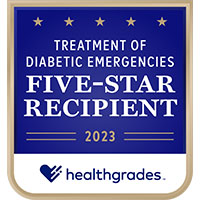All Emergency Room Services
Emergency Room Locations
Whether it’s a broken bone, high fever or a more severe medical emergency like a heart attack, we are ready to pro...
When to Go to an ER
Find out what constitutes a medical emergency and when you should visit an emergency room or ER.
Hospital & ER Safety
Come to our hospital knowing that we do everything possible to keep patients and staff safe.
Emergency Healthy Living
Saint Vincent Hospital provides helpful emergency health articles and tips to keep you in the know on trending topics, c...
Exception occurred while executing the controller. Check error logs for details.
Seven Ways to Avoid a Fall
Falls account for nearly a third of all nonfatal injuries in the U.S. And a fall can be life changing. It happens in a flash, with very little – or no – warning. In fact, the author of this article was enjoying a quiet evening at home, playing a water hose game with the dog. Game over and time to go inside and dry off the dog. But – OHHHHHH NOOOOOOOOOOO – the tile floor was wet and kaboom! Broken arm.
The fallout? Hours and dollars spent in emergency and doctor visits. Pain. Awkwardness. Learning to be a lefty. Reliance on others for help. And then physical therapy to get everything working again.
In the big picture of life, I was fortunate. No head injury. No surgery. Life changing? Yes. So, in the spirit of paying forward lessons learned, here are seven ways to be aware of your environment so that you can keep on doing life as usual:
The fallout? Hours and dollars spent in emergency and doctor visits. Pain. Awkwardness. Learning to be a lefty. Reliance on others for help. And then physical therapy to get everything working again.
In the big picture of life, I was fortunate. No head injury. No surgery. Life changing? Yes. So, in the spirit of paying forward lessons learned, here are seven ways to be aware of your environment so that you can keep on doing life as usual:
- Lighting – Preventing a fall may be as simple as turning on a light, especially around stairs. Lights also illuminate tripping hazards.
- Level changes – Even a one- to two-inch elevation can cause trips and falls. Be aware of changes in flooring that may change elevation.
- Liquids – Pick up ice that falls on the kitchen floor, watch out for wet bathroom floors after a bath or shower and rain on concrete sidewalks.
- Area rugs – Use a rug pad to prevent slipping. For the elderly, best to forgo area rugs altogether to prevent tripping on the edge.
- Clutter and toys – Make a sweep through the house each day to remove tripping hazards.
- Ladders – A chair is not a ladder! Step stools are an invaluable asset for many situations. Don’t climb a tall ladder alone without someone to hold the base. And do we even need to tell you to not climb on the counter?!
- High heels or boots – A small pebble or barely missing a step on a curb or stairs can take you down without warning. If there’s a railing, use it – it could prevent a traumatic event.
- Endurance – Aerobic exercise strengthens your heart and lungs with an increased heart rate. Take a walk or several walk breaks in the day (go faster than a stroll!) try an exercise class or just dance!
- Strength – Weights or your own body weight as resistance help make muscles stronger to support your bones and body. Climbing stairs counts as strength and aerobic exercise. If you have access to a pool, water aerobics, using weights in the pool and swimming are good for resistance, too.
- Balance – Yoga or Tai Chi help with balance, as does practice standing on one foot.
- Flexibility – Stretch to stay limber. You’ll enjoy greater freedom of movement for other types of exercise and common activities. You can even do subtle stretches while standing in lines.

 The Emergency Room (ER) at Saint Vincent Hospital provides you with access to nationally renowned experts in emergency medicine, toxicology, cardiac problems, trauma, and more when you need them most. At the Saint Vincent Hospital Emergency Room, you’ll find:
The Emergency Room (ER) at Saint Vincent Hospital provides you with access to nationally renowned experts in emergency medicine, toxicology, cardiac problems, trauma, and more when you need them most. At the Saint Vincent Hospital Emergency Room, you’ll find: